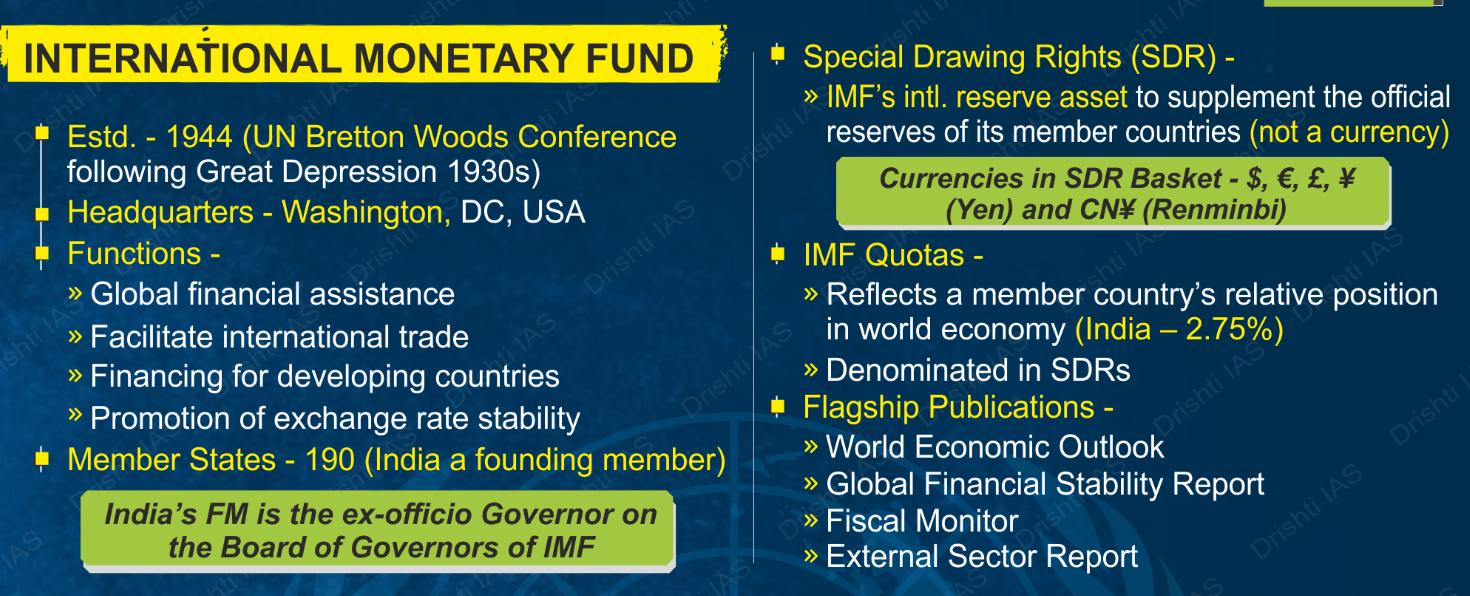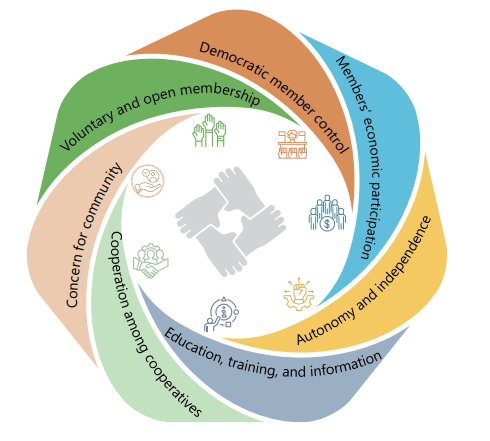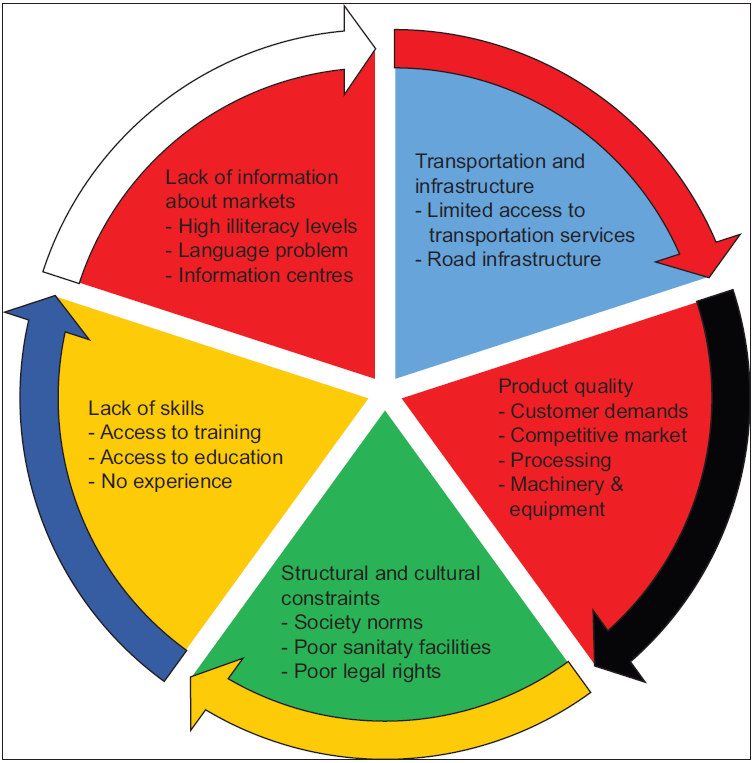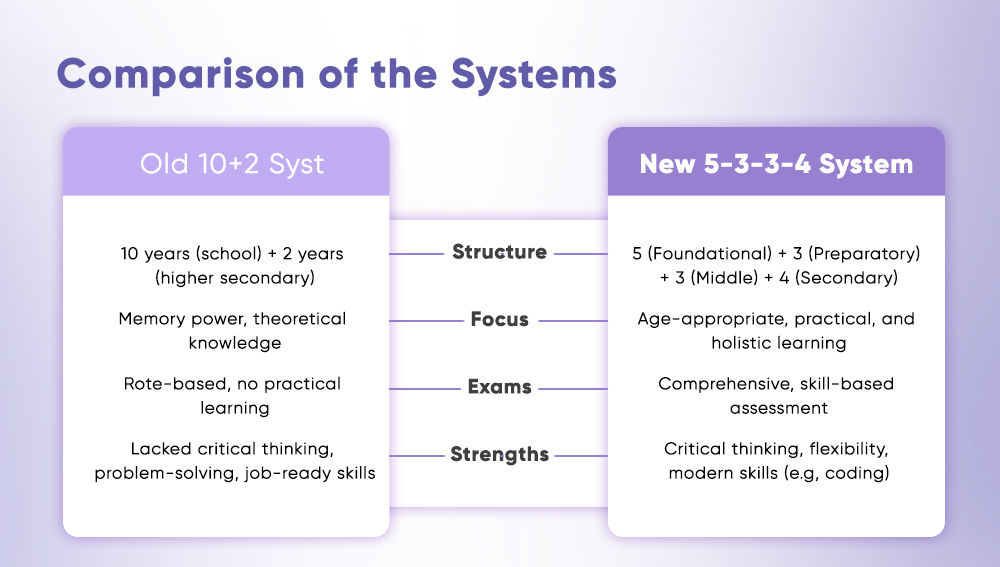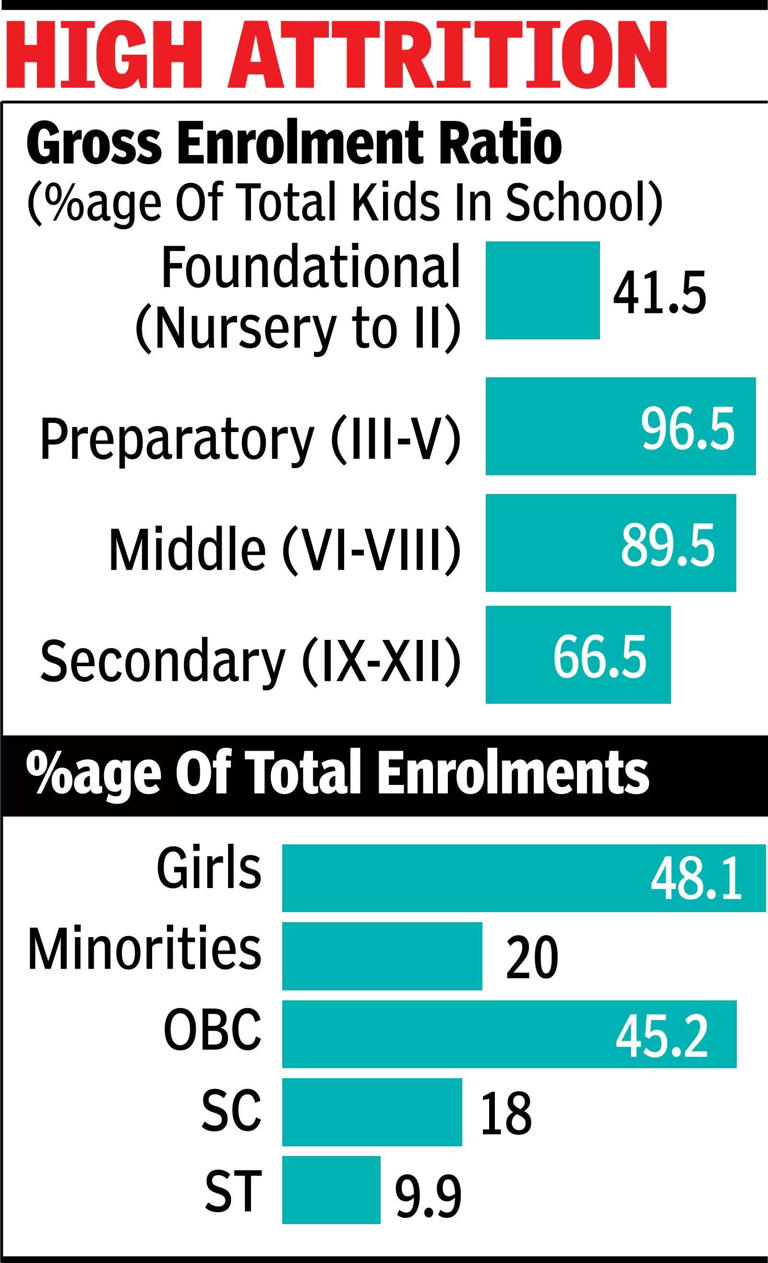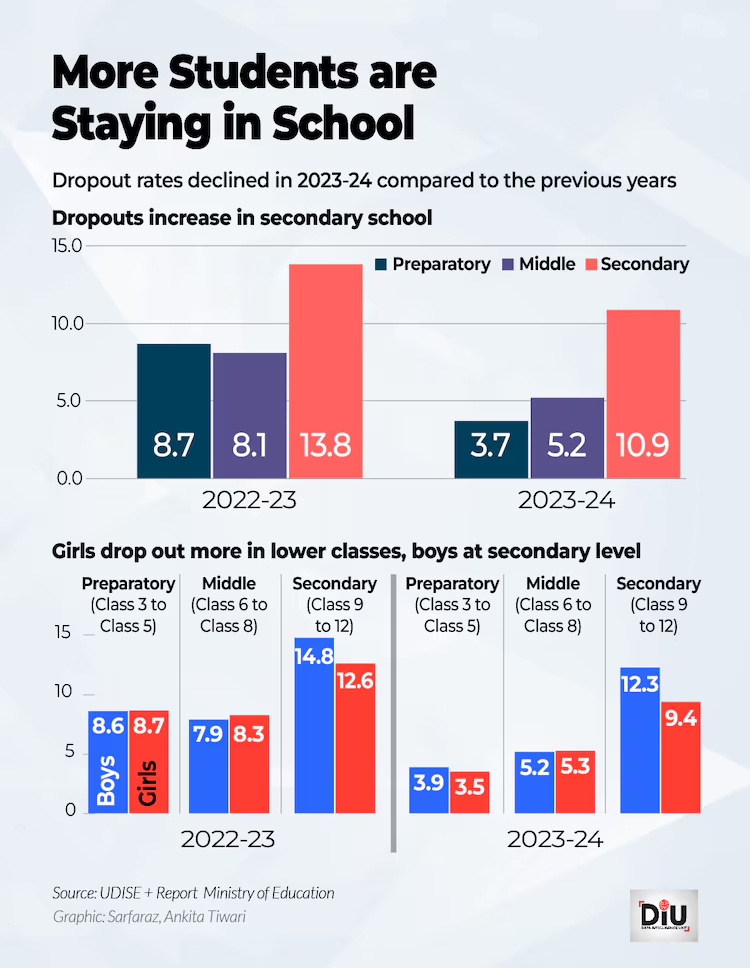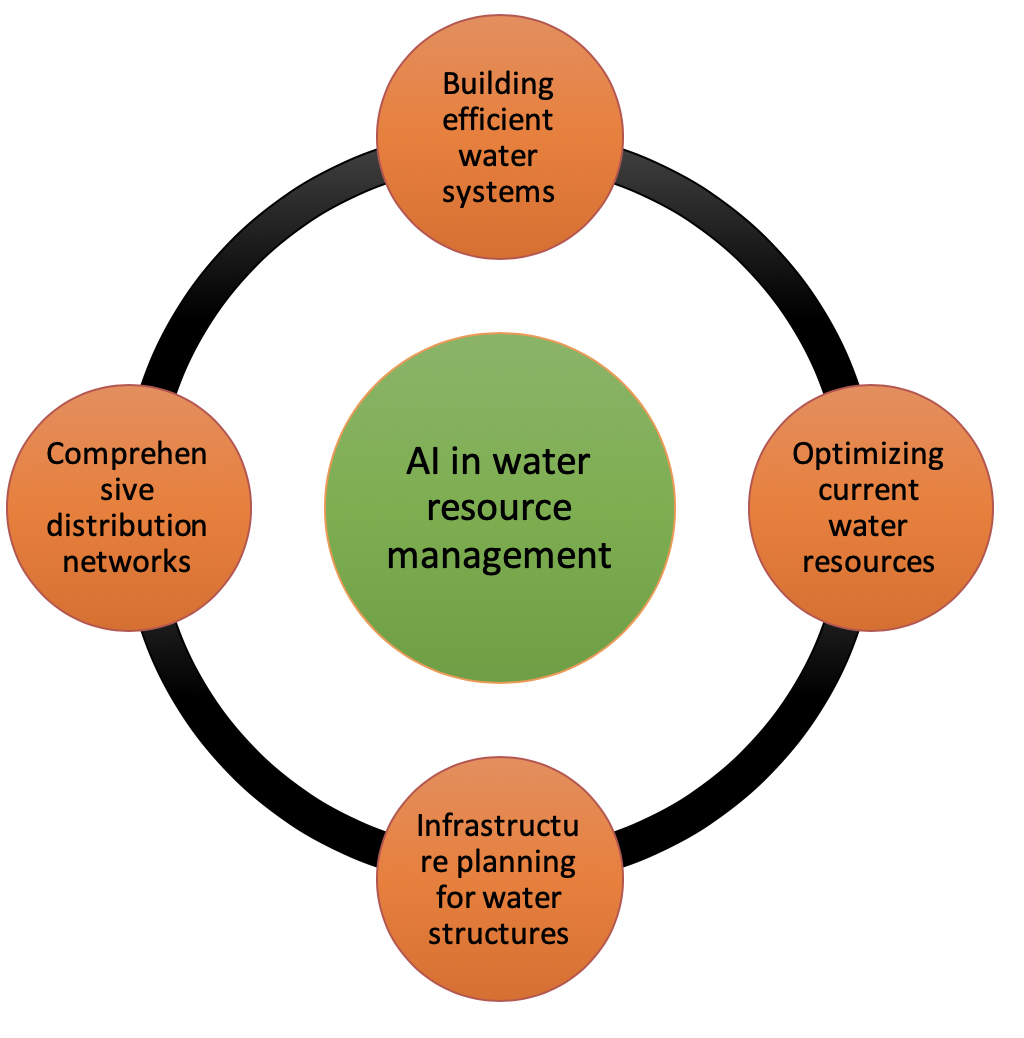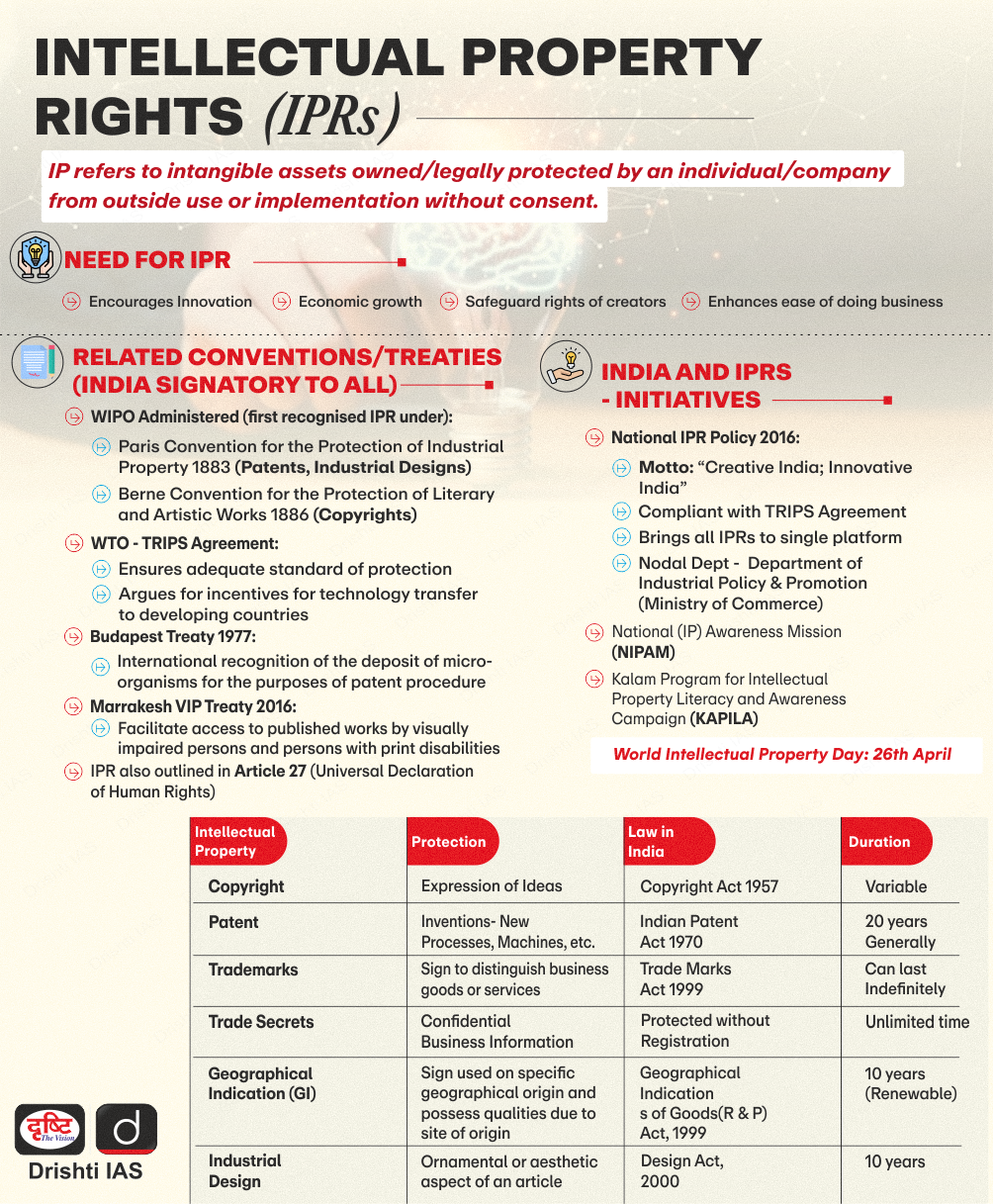Economy
2025 World Economic Outlook Report
For Prelims: International Monetary Fund, World Economic Outlook, Inflation, Demographic dividend, Make in India
For Mains: India’s macroeconomic stability and fiscal policy, Drivers of economic growth in emerging markets
Why in News?
The International Monetary Fund (IMF)'s April 2025 World Economic Outlook (WEO) projects that India will surpass Japan to become the fourth-largest economy in 2025.
What are the Key Highlights of the World Economic Outlook Report 2025?
Global:
- Global Growth Forecast: The IMF revised global growth down to 2.8% for 2025, and projected 3.0% growth for 2026.
- The world's largest economy, the US, is projected to grow by just 1.8%, significantly lower than last year’s expectations due to policy uncertainty and trade tensions.
- Emerging Markets: Growth in emerging markets and developing economies is projected to slow, with a 3.7% growth rate forecast for 2025, though still above the global average.
- Global Inflation: Inflation rates are expected to decline but at a slower pace than anticipated, and downside risks remain, particularly from trade tensions and volatile financial markets.
- Aging Economies: Global economies are experiencing rapid aging, driven by declining fertility rates and rising life expectancy.
- This shift from a demographic dividend to a demographic drag presents challenges for economic growth. The average age of the world’s population is projected to increase by 11 years between 2020 and the end of the century.
- However, improvements in health and longevity have significantly enhanced the quality of life in older age.
- A 70-year-old in 2022 had cognitive abilities similar to those of a 53-year-old in 2000. Healthy aging is projected to add 0.4% to global GDP growth between 2025 and 2050.
India
- Growth forecast: While India’s growth forecast has been slightly revised down from 6.5% to 6.2% for 2025, it remains the fastest-growing major economy among its global counterparts.
- The IMF projects India's nominal gross domestic product (GDP) to reach USD 4.187 trillion in 2025, surpassing Japan's estimated USD 4.186 trillion.
- Comparisons to competitors: Despite this slight downtrend, India continues to outperform most global and regional competitors, including China, which is projected to grow at a slower rate.
- China’s Gross Domestic Product (GDP) growth forecast for 2025 has been downgraded to 4.0% from 4.6%, making India’s growth trajectory stand out.
- Private consumption: A key driver of India’s growth is private consumption, particularly in rural areas, which is expected to remain strong, even amid global economic uncertainty.
IMF’s World Economic Outlook
- The WEO, published biannually in April and October, provides analysis and projections for the global economy and individual countries.
- It aims to assess economic developments, identify trends, and offer policy recommendations.
- Key components WEO include forecasts for global and regional economic performance, insights into inflation trends, and an evaluation of financial stability risks.
- The WEO serves as an essential tool for policymakers, researchers, and investors to understand and navigate the economic landscape.
What are the Key Drivers of India’s Economic Resilience?
- Private Consumption: The Private Consumption is a significant driver, especially in rural areas, ensuring steady domestic demand despite global economic challenges.
- India’s private consumption has nearly doubled to Rs. 1.83 lakh crore in 2024, growing at a 7.2% Compound Annual Growth Rate (CAGR), surpassing the US, China, and Germany.
- The country is on track to become the world’s third-largest consumer market by 2026, with the middle class expanding rapidly.
- By 2030, the number of individuals earning over Rs. 8.73 lakh annually is expected to nearly triple.
- India’s per capita income is projected to exceed Rs. 3.49 lakh by 2030, driving consumption growth.
- Macroeconomic Fundamentals: India’s robust fiscal management, with a lower debt-to-GDP ratio of 56.8% in FY25 compared to its competitors like the US, which has a debt-to-GDP ratio of 124.0%, along with structural reforms, helps maintain stability.
- Infrastructure Development: Investment in infrastructure and digitalization boosts productivity and job creation, enhancing long-term growth prospects.
- India’s digital economy has become a significant contributor to its economic growth, accounting for 11.74% of GDP in 2022-23.
- Government Reforms: Initiatives like the Pradhan Mantri Jan Dhan Yojana for financial inclusion, and Make in India along with Production-Linked Incentive schemes to boost manufacturing have strengthened India’s economic dynamism.
- Additionally, schemes like Bharatmala Pariyojana for road infrastructure, Sagarmala Project for port development, and Smart Cities Mission have significantly improved physical infrastructure, supporting long-term growth.
- Demographics and Labor Force: India benefits from a young, growing workforce, with policies aimed at increasing female labor participation (from 23.3% in 2017-18 to 41.7% in 2023-24) and addressing global aging workforce challenges.
- A ServiceNow report projects India’s workforce will grow from 423.73 million in 2023 to 457.62 million by 2028, adding 33.89 million jobs, particularly in sectors like retail, tech, manufacturing, education, and healthcare.
- Technological Innovation: The growing adoption of digital technologies, including Artificial Intelligence and renewable energy solutions, supports higher productivity and resilience in economic activities.
- Indian startups are likely to create 50 million new jobs and add USD 1 trillion to the economy by 2029-30 (FY30).
- India's technology sector is witnessing rapid growth and is projected to reach USD 300-350 billion over the next five years.
- External Demand and Trade Diversification: India's increased integration into global value chains and trade agreements provides growth opportunities and buffers against global volatility. India’s share in global services exports has doubled from 1.9% in 2005 to 4.3% in 2023.
Conclusion
India’s resilient economic growth, driven by robust private consumption, structural reforms, and strategic investments, positions it as a global leader amidst economic uncertainties. With demographics supporting its trajectory, India’s outlook remains positive. The country’s ability to leverage these factors ensures it will continue to play a pivotal role in shaping the global economic landscape.
|
Drishti Mains Question: India is projected to remain the fastest-growing major economy despite global uncertainties. Discuss the key factors contributing to this resilience. |
UPSC Civil Services Examination, Previous Year Question (PYQ)
Prelims
Q1. "Rapid Financing Instrument" and "Rapid Credit Facility" are related to the provisions of lending by which one of the following? (2022)
(a) Asian Development Bank
(b) International Monetary Fund
(c) United Nations Environment Programme Finance Initiative
(d) World Bank
Ans: (b)
Q2. ‘Global Financial Stability Report’ is prepared by the (2016)
(a) European Central Bank
(b) International Monetary Fund
(c) International Bank for Reconstruction and Development
(d) Organization for Economic Cooperation and Development
Ans: (b)
Mains
Q. The World Bank and the IMF, collectively known as the Bretton Woods Institutions, are the two inter-governmental pillars supporting the structure of the world’s economic and financial order. Superficially, the World Bank and the IMF exhibit many common characteristics, yet their role, functions and mandate are distinctly different. Elucidate. (2013)


Social Issues
Participation of Women in Cooperatives
For Prelims: United Nations (UN), International Year of Cooperatives, NABARD, Multi-Unit Cooperative Societies Act, 2002, Directive Principle of State Policy, Urban Cooperative Banks, Self-Employed Women's Association (SEWA)
For Mains: Cooperatives in India: Significance of Cooperatives in Women Empowerment, Related Challenges and Way Forward
Why in News?
Despite India being one of the largest cooperative movements in the world, with approximately 8.5 lakh cooperatives, women-only cooperatives still account for only 2.52% of the total, according to a NITI Aayog report (2023).
- The UN has declared 2025 as the International Year of Cooperatives with the theme “Cooperatives Build a Better World,” launching it globally in 2024 India.
What are Cooperative Societies?
- About:
- A cooperative society is a voluntary, member-owned organization designed to meet common economic, social, and cultural needs through self-help, mutual assistance, and community welfare, distinct from profit-driven enterprises.
- Evolution of the Cooperative Movement:
- Pre-Independence Era:
- Informal cooperatives like Chit Funds and Nidhis existed; formalized through the Cooperative Credit Societies Act, 1904 and expanded by the Cooperative Societies Act, 1912 to include marketing and artisan societies.
- Maclagan Committee (1914) recommended a three-tier cooperative banking system, shaping the structural framework for cooperative finance.
- Post-Independence Era:
- Strengthened through Five-Year Plans, establishment of National Cooperative Development Corporation (NCDC) (1963) and NABARD (1982) to boost rural credit and cooperative development.
- Legal and Constitutional Backing:
- Key legislations include Multi-State Cooperative Societies Act (MSCS) (1984 & 2023), National Policy on Cooperatives (2002), and the 97th Constitutional Amendment (2011) granting cooperatives constitutional recognition and protection.
- Recent Developments:
- The Ministry of Cooperation, established in 2021, emphasizes the government’s commitment to enhancing cooperative societies as key contributors to economic progress.
- Pre-Independence Era:
- Types of Cooperatives:
- Consumers' Cooperatives: Provide goods at fair prices by eliminating middlemen (e.g., Kendriya Bhandar).
- Producers' Cooperatives: Support small producers with inputs like raw materials and tools.
- Marketing Cooperatives: Facilitate collective sale of produce to ensure better prices (e.g., Amul).
- Credit Cooperatives: Offer credit and banking services, including rural and urban cooperative banks. (e.g., Urban Cooperative Banks (UCBs)).
- Farming Cooperatives: Promote collective farming benefits for small landholders. (e.g., Primary Agricultural Credit Societies (PACS)).
- Housing Cooperatives: Enable affordable housing through land pooling and shared development (e.g., Employees’ Housing Societies).
- Current Status of Cooperatives in India:
- India’s Position: India accounts for 27% of global cooperatives, with 20% of its population as members, above the global average of 12%.
- Top 3 sectors: Housing (24%), dairy (17.7%), and PACS (13%), accounting for over 54% of all the cooperatives in the country.
- Leading States: Maharashtra (alone accounts for over 25% of the country's cooperatives), Gujarat, Telangana, Madhya Pradesh and Karnataka.
- Principles of Cooperatives:
| Read More: Cooperatives and Their Evolution in India |
What is the Significance of Cooperatives in Women Empowerment?
- Pathway to Socio-Economic Empowerment:
- Cooperatives provide rural women with low-threshold entry into income-generating activities, accessible livelihood options, fair pricing, skill development, and inclusive governance, addressing economic exclusion and enhancing socio-economic resilience.
- Successful models like Self-Employed Women's Association (SEWA) (3.2 million informal women workers), Amul (3.6 million women dairy farmers), and Lijjat Papad (45,000+ home-based producers) illustrate how cooperatives foster both economic self-reliance and social upliftment for women.
- Inclusive Leadership and Historical Recognition:
- Despite significant roles in informal cooperatives like kuries and bhishis in Kerala and Maharashtra, women’s contributions remain under-recognized in formal cooperative narratives.
- Cooperatives can help integrate women into value chains as workers, producers, and decision-makers, thus ensuring equitable benefit-sharing and access to markets.
- Access to Services & Financial Inclusion:
- Women’s cooperatives enhance access to credit, banking, insurance, housing, healthcare, and education, bridging service delivery gaps in underserved areas.
- They also build financial literacy and entrepreneurial capacity, enabling women to manage savings, investments, and small enterprises effectively.
- Social Capital and Community Resilience:
- Cooperatives foster trust, reciprocity, and shared responsibility, helping women build resilience against socio-economic challenges, particularly in rural or disaster-prone areas with limited institutional support.
What are the Key Government Initiatives For Empowering Women Cooperatives?
- Amendment of the MSCS Act, 2023 mandates 2 seats for women on the boards of multi-state cooperatives, ensuring gender equality and decision-making participation.
- Model Bye-Laws for PACS mandates women directors on the boards of over 1 lakh PACS, ensuring women’s representation in grassroots cooperative management.
- NCDC initiatives such as Swayam Shakti Shahakar Yojna provides working capital loans to women SHGs for access to bank credit and Nandini Sahakar offers term loans with interest subvention of up to 2% to women cooperatives for business activities.
- Collaboration Between NABARD, NDDB, and State Governments to focus on enhancing cooperatives in rural areas, including:
- Establishment of Multipurpose PACS, Dairy, and Fishery Cooperatives in Panchayats.
- Cooperation Among Cooperatives pilot project in Gujarat, empowering women in Dairy Cooperatives by designating them as Business Correspondents/Bank Mitras and providing Rupay KCC cards.
What are the Challenges Faced by Women’s Cooperatives in India?
- Structural Constraints:
- Around 50% of women’s cooperatives in India are dormant due to inadequate institutional support, poor financial linkages, lack of training, and limited market access. Most remain small, underfunded, and struggle with sustainability, visibility, and producing market-ready, quality products.
- Time Poverty and Unpaid Labour:
- According to the Time Use Survey (2024), women spend 16.4% of their day on unpaid domestic work, while men spend only 1.7%. This disproportionate burden limits women’s ability to participate in paid or cooperative work.
- Lack of Skills & Underrepresentation:
- Women in rural cooperatives face major challenges due to low literacy, limited education, and lack of skills in business, technology, and marketing. This hampers their participation, leadership, and productivity.
- Poor market access and location in marginalised areas further weaken cooperatives’ viability.
- In mixed cooperatives, women hold only 26% of membership positions, and even fewer leadership roles limiting their influence on decision-making and strategic planning.
- Women in rural cooperatives face major challenges due to low literacy, limited education, and lack of skills in business, technology, and marketing. This hampers their participation, leadership, and productivity.
- Cultural and Social Norms:
- Deep-rooted patriarchy and gendered expectations often curtail women's autonomy, especially in rural areas. Limited mobility, societal scrutiny, and lack of confidence hinder their sustained participation.
What Measures Can be Taken to Empower Women Cooperatives in India?
- Institutional and Financial Support:
- Revive dormant cooperatives through professional guidance, skill-building, and market linkages. Ensure dedicated funding, low-interest credit, and access to equipment.
- Promote cluster-based models tied to value chains, e-commerce, and platforms like GeM for better sustainability and market reach.
- Capacity Building and Training:
- Provide regular training in governance, finance, digital literacy, and marketing, with leadership quotas and mentorship to boost women's participation.
- Recognizing Unpaid Work & Addressing Time Poverty:
- Promote community childcare, shared domestic roles, and time-saving infrastructure to reduce women’s unpaid work.
- Advocating for care services and infrastructure can help women reduce the time spent on unpaid domestic work, thus enabling them to engage more in economic activities like cooperatives.
- Policy Integration and Technological Innovation:
- Policy convergence between the Ministry of Cooperation, Women and Child Development, MSME, and Agriculture is vital to streamline support for women’s cooperatives.
- Promote digital platforms for marketing, training, and financial inclusion, while computerizing PACS and Agricultural and Rural Development Banks (ARDBs) to enhance transparency and efficiency.
Conclusion
Cooperatives can transform the socio-economic landscape for women in India. Empowered women-only cooperatives, with proper resources, training, and leadership, can drive economic and social change. The International Year of Cooperatives in 2025 offers a timely opportunity to reshape policies and empower women at the forefront of this movement.
|
Drishti Mains Question Examine the role of women cooperatives in empowering rural women in India. Discuss the challenges they face and suggest measures to improve their effectiveness. |
UPSC Civil Services Examination, Previous Year Question (PYQ)
Prelims
Q. In India, which of the following have the highest share in the disbursement of credit to agriculture and allied activities? (2011)
(a) Commercial Banks
(b) Cooperative Banks
(c) Regional Rural Banks
(d) Microfinance Institutions
Ans: (a)
Mains
Q. “In the Indian governance system, the role of non-state actors has been only marginal.” Critically examine this statement. (2016)
Q. “In the villages itself no form of credit organisation will be suitable except the cooperative society.” – All India Rural Credit Survey. Discuss this statement in the background of agricultural finance in India. What constraints and challenges do financial institutions supplying agricultural finance face? How can technology be used to better reach and serve rural clients? (2014)


Governance
State of School Education In India
For Prelims: National Education Policy (NEP) 2020, Mid Day Meal Scheme, Sustainable Development Goal, NIPUN, ASER 2024, Elementary Education
For Mains: State of Elementary School Education In India, Significance of Government Policies & Interventions in Education and Issues Related to Children.
Why in News?
India's school education system is struggling, with the ASER 2024 report revealing that only 23.4% of Class 3 students in government schools can read a Class 2-level text. Public education spending remains at 4.6% of GDP, falling short of the 6% target set by National Education Policy (NEP), 2020.
Structure of School Education in India
- India’s school education system is transitioning in phased manner from the 10+2 format to the 5+3+3+4 structure under the NEP, 2020.
- This revamped model spans ages 3-18, integrating early childhood care and education. It comprises:
- Foundational Stage (5 years): 3 years pre-school + Classes 1–2
- Preparatory Stage (3 years): Classes 3–5
- Middle Stage (3 years): Classes 6–8
- Secondary Stage (4 years): Classes 9–12
What are the Challenges Faced by India’s School Education System?
- Learning Poverty and Poor Outcomes: Despite a high Gross Enrolment Ratio at the elementary level, foundational learning is severely deficient.
- According to ASER 2024, 76.6% of Class 3 students remained unable to read the text, which was available in 19 languages.
- According to the World Bank’s Learning Poverty Index (percentage of 10-year-olds unable to read a basic text), India's learning poverty rate increased to 70% post Covid-19, from 55% in 2019.
- Teacher Shortage and Ineffective Training: India faces a severe teacher shortage with over 1 million vacancies, especially in rural areas, leading to high pupil-teacher ratios (up to 47:1) and compromised teaching quality.
- States like Uttar Pradesh and Madhya Pradesh have over 100,000 vacancies, and a notable percentage of teachers remain underqualified.
- High Dropouts & Gender Disparity: According to the Economic Survey 2024–25, dropout rates are 1.9% at primary, 5.2% at upper primary, and 14.1% at secondary levels.
- According to UDISE Plus data for 2022-23 and 2023-24, boys have higher dropout rates than girls, especially at the secondary level.
- Infrastructure Gaps: According to UDISE+ 2023-24 data, only 43.5% of government schools have computers for teaching, compared to 70.9% in private, unaided schools.
- Despite basic amenities in over 90% of schools, infrastructure gaps persist.
- 1.52 lakh lack electricity, 67,000 lack functional toilets, and only 33.2% of government schools have disabled-friendly toilets, most of which are non- functional.
- Despite basic amenities in over 90% of schools, infrastructure gaps persist.
- Regional Disparity: States like Bihar, Uttar Pradesh, and Maharashtra have the highest dropout rates.
- In West Bengal, 79% of schools are at the foundational and preparatory levels, but only 11.6% provide secondary education, which increases the risk of dropouts.
- Curriculum and Pedagogical Challenges: India’s school system remains focused on exams and rote learning, with little space for creativity, critical thinking, or life skills.
- Many students, especially first-generation learners, struggle due to lack of local language adaptation.
- Regulatory and Governance Deficits: India’s school regulation focuses more on inputs than learning outcomes, lacking an independent quality monitoring body.
- Though NEP 2020 proposes a State School Standards Authority (SSSA) for outcome-based regulation, its slow implementation and absence of transparent benchmarks hinder accountability and reform.
What is the State School Standards Authority (SSSA)?
- About: SSSA is an independent regulatory body proposed under the NEP 2020, aimed at overseeing and ensuring the quality of education in schools across India.
- Functions:
- The SSSA is responsible for setting academic and operational standards, assessing student performance/
- Promoting accountability, providing transparent information to parents, and regulating both public and private schools to ensure uniform quality across all educational institutions.
- Recommendations for Effective Implementation:
- The SSSA should be established as an autonomous statutory body with diverse stakeholder representation, ensuring transparency, accountability, and conflict-free governance.
- It must set practical, ambitious standards with effective implementation, learning from past regulatory shortcomings of the RTE Act, 2009.
What is the Institutional Framework of School Education in India?
|
Regulatory Body |
Functions |
|
Central Advisory Board of Education (CABE) |
It is the highest advisory body for both the Central and State Governments. Acts as a platform for resolving educational issues. |
|
National Council of Educational Research and Training (NCERT) |
NCERT, established in 1961, supports the Central and State Governments in improving school education, nodal agency for the Universalisation of Elementary Education. |
|
State Council of Educational Research and Training (SCERT) |
It is responsible for educational research and teacher training at the state level and implements the National Policy on Education within the states. |
|
Central Board of Secondary Education (CBSE) |
CBSE is a national-level board that conducts public exams and maintains a standardized curriculum for affiliated schools.
|
What are the Government Initiatives Related to Education?
What Measures Should be Taken to Improve School Education in India?
- Focus on Learning Outcomes: Focus should be on learning outcomes by using assessments like the National Achievement Survey (NAS) and implementing performance-linked funding.
- Scale up the NIPUN Bharat Mission to ensure foundational literacy and numeracy for all children by Grade 3, supported by trained teachers and community involvement.
- Reform Teacher Training and Recruitment: Strengthen teacher education with practical pedagogy and ongoing professional development.
- Equitable Access to Education: Bridge the urban-rural divide by investing in public education, especially in rural and underserved areas, ensuring every child receives quality education, regardless of socio-economic background.
- Technology Integration: Expand initiatives like DIKSHA (Digital Infrastructure for Knowledge Sharing) and NDEAR to provide digital access, especially in rural areas.
- Adopt a blended learning model and integrate AI-driven personalized learning and smart classrooms to enhance education quality and accessibility.
- Establish Independent Regulatory Oversight: Operationalise the State School Standards Authority (SSSA) as recommended under NEP 2020 to set clear quality benchmarks,
- Enable third-party assessments, and ensure accountability across all schools, moving beyond input-based regulation.
|
Drishti Mains Question: What are the key challenges in India’s school education system? How can the National Education Policy (NEP) 2020 address these issues? |
UPSC Civil Services Examination, Previous Year Question (PYQ)
Prelims
Q. Which of the following provisions of the Constitution does India have a bearing on Education? (2012)
- Directive Principles of State Policy
- Rural and Urban Local Bodies
- Fifth Schedule
- Sixth Schedule
- Seventh Schedule
Select the correct answer using the codes given below:
(a) 1 and 2 only
(b) 3, 4 and 5 only
(c) 1, 2 and 5 only
(d) 1, 2, 3, 4 and 5
Ans- (d)
Mains
Q1. How have digital initiatives in India contributed to the functioning of the education system in the country? Elaborate on your answer. (2020)
Q2. Discuss the main objectives of Population Education and point out the measures to achieve them in India in detail. (2021)


Facts for UPSC Mains
One State-One RRB
Why in News?
The 4th phase of Regional Rural Bank (RRB) consolidation under the ‘One State-One RRB’ (OS-OR) plan has been rolled out in 10 states and one Union Territory, further shrinking the number of RRBs in India.
- This move aims to boost operational viability and efficiency, but concerns persist around staffing, technology integration, and regional risks.
What is the One State-One RRB Policy?
- About: OS-OR Policy is a reform initiative by the Department of Financial Services aimed at consolidating multiple RRBs within a state into a single unified entity.
- The consolidation of RRBs began in 2005, following the recommendations of the Dr. Vyas Committee (2001), which was constituted by the Reserve Bank of India (RBI).
- Phases of Consolidation: Implemented under Section 23A(1) of the Regional Rural Banks Act, 1976, which allows mergers in the public interest.
- Phase 1 (FY 2006 – FY 2010): RRBs sponsored by the same bank within a state were amalgamated. RRBs were reduced from 196 to 82.
- Phase 2 (FY 2013– FY 2015): RRBs across different sponsor banks within a state were amalgamated. RRBs were reduced from 82 to 56.
- Phase 3 (FY 2019– FY 2021): The 3rd phase focused on the OS-OR principle, reducing RRBs in larger states and consolidating them in smaller ones.
- As a result, the number of RRBs dropped from 196 in 2005 to 43 by March 2021, improving profitability, capital, asset quality, and business.
- Phase 4 (FY 2025 Onwards): Under OS-OR, the consolidation of RRBs has reduced the total number from 43 to 28.
- Each restructured RRB will have an authorized capital of Rs 2,000 crore, providing a stronger base for credit expansion and economic support in their respective states.
- Impact: In FY 2023–24, RRBs recorded their highest-ever net profit of Rs 7,571 crore. The OS-OR model is expected to further support inclusive rural development and boost the rural economy.
Regional Rural Bank
- About: RRBs were established in 1975, following the recommendations of the Narasimham Committee on Rural Credit (1975), and formalised under the RRB Act, 1976.
- Their aim is to strengthen the rural economy by providing credit and other banking services to small and marginal farmers, agricultural labourers, artisans, and small entrepreneurs in rural and semi-urban areas.
- The first RRB was Prathama Bank, headquartered in Moradabad, Uttar Pradesh.
- Ownership: The ownership of RRBs is shared among the Government of India (50%), the concerned State Government (15%), and the sponsor bank (35%).
- Regulation: RRBs are regulated by the Reserve Bank of India under the Banking Regulation Act, 1949, and supervised by NABARD.
- For taxation, they are treated as cooperative societies under the Income Tax Act, 1961.
- Priority Sector Lending: The RBI has set an enhanced target for Regional Rural Banks (RRBs) to lend 75% of their Adjusted Net Bank Credit (ANBC) or 75% of ANBC or Credit Equivalent of Off-Balance Sheet Exposure (CEOBE), whichever is higher, to the Priority Sector Lending (PSL).
- This is in contrast to the 40% target applicable to commercial banks. RRBs can sell their priority loan portfolio through Priority Sector Lending Certificates (PSLC) to commercial banks.
What Challenges Persist Despite the Consolidation of RRBs?
- Cost Optimization vs. Operational Constraints: Despite the consolidation, RRBs still face high operational costs. For instance, in 2023-24, the cost/income ratio was 77.4% and wages/operating expenses ratio was 72%, indicating inefficiency.
- Cost optimization is important, but it depends on whether each RRB can handle the combined branches and staff from the mergers. Some branch reductions are unavoidable, but adjusting the staff may face frictions.
- Despite tech advances, personal engagement with villagers is essential due to low financial inclusion and literacy, raising costs. Adopting new technologies, including cybersecurity, also demands significant investment.
- Concentration Risk: In a scenario where a State’s agricultural sector fails, a single RRB would absorb the full impact of losses, which was not the case under the previous model where risks were spread across multiple RRBs.
- This concentration can exacerbate regional economic vulnerabilities, especially in the event of sectoral downturns.
- Inter-Governmental and Regulatory Challenges: The three-way ownership structure (Central and State governments, sponsor banks) and two regulatory authorities (RBI and National Bank for Agriculture and Rural Development (NABARD)) create administrative complexities and slow decision-making processes, stifling the effectiveness of RRB operations.
- This multiplicity of owners and regulators complicates the governance structure, leading to inefficiencies in RRB management.
- Economic Viability and Regional Considerations: The reduction in RRBs under OS-OR makes economic sense, but consolidation must consider each state's unique economy, demography, and geography, as a one-size-fits-all approach may not be effective.
|
Drishti Mains Question: Examine the impact of the One State-One RRB policy on the operational efficiency and viability of RRBs. What challenges persist despite the consolidation? |
UPSC Civil Services Examination Previous Year Question (PYQ)
Prelims
Q. Which of the following grants/grant direct credit assistance to rural households? (2013)
- Regional Rural Banks
- National Bank for Agriculture and Rural Development
- Land Development Banks
Select the correct answer using the codes given below:
(a) 1 and 2 only
(b) 2 only
(c) 1 and 3 only
(d) 1, 2 and 3
Ans: (c)


Rapid Fire
INS Tamal
The Indian Navy is set to receive advanced stealth warship INS Tamal from Russia.
- About: Tamal is a stealth warship, built as a part of the 2016 Indo-Russian deal, with two ships built in Russia and two in India.
- INS Tamal is the 2nd Russian-built frigate in this batch, following INS Tushil (commissioned Dec 2024).
- Advanced Features:
- Precision Strikes: Speeds up to 30 knots and a range of 3,000 km per mission.
- Anti-Submarine Weapons: Equipped with torpedoes and rocket systems like BrahMos missile.
- BrahMos is a supersonic cruise missile with a range of nearly 300-400 km and operates at near Mach 3 speed, ensuring quick engagement times.
- Helicopter Deployment: Can operate a multi-role helicopter for enhanced surveillance and combat.
- Stealth Design: Built to evade radar, improving survivability in modern naval warfare.
| Read More: INS Tushil |


Rapid Fire
Impact of Marine Pollution on Seabirds
A research highlights that plastic ingestion by seabirds not only causes physical harm but also disrupts their hormonal systems, posing long-term biological risks.
- Seabirds like albatrosses, petrels, and shearwaters (members of the order Procellariiformes) ingest highest rates of plastic ingestion due to their foraging behavior and unique digestive systems.
- Ingested plastic can cause physical harm (e.g., obstruction, perforation, malnutrition) and release toxic chemicals that affect hormones.
- Marine Plastic Pollution: Plastic pollution accounts for 80% of marine waste, with 8–10 million metric tons entering oceans annually. By 2050, plastic could outweigh all fish.
- Currently, 50–75 trillion plastic pieces pollute our oceans, forming vast garbage patches or breaking into microplastic particles.
- Marine pollution harms biodiversity, reduces oxygen levels in ocean waters, disrupts deep-sea ecosystems, contaminates the marine food chain, and negatively impacts human health, and coastal livelihoods.
- Combating Marine Plastic Pollution: The Global Partnership on Plastic Pollution and Marine Litter (GPML), established in 2012, is a multi-stakeholder platform to combat plastic pollution globally.
- The UNEP Source-to-Sea Pollution Unit serves as its secretariat, supporting knowledge-sharing and joint action.
- The 1972 London Convention and 1978 Protocol to the International Convention for the Prevention of Pollution from Ships (MARPOL) aim to prevent marine pollution from waste dumping and ship discharges.
| Read more: Plastic Marine Pollution |


Rapid Fire
AI-Enabled Water Atlas
Haryana has launched the Haryana Water Resource Atlas 2025, an Artificial Intelligence (AI)-powered geospatial platform that monitors, manages, and conserves the state’s rapidly depleting water reserves.
AI-Enabled Water Atlas
- The platform offers real-time insights into groundwater levels, surface water bodies, aquifers, recharge zones, canal systems, and cropping patterns.
- It provides real-time, data-driven support for water conservation, sustainable farming, and infrastructure planning by integrating satellite data, GPS surveys, IMD meteorological inputs, and data from Central Groundwater Board (CGWB), Irrigation, and Agriculture Departments.
India is taking strides in effective water management with the help of AI. Recently, researchers from IIT Kharagpur have also developed an AI-based prediction model for detecting Arsenic pollution in drinking water..
| Read More: Making Water Management Effective in India |


Rapid Fire
US Places India on 'Priority Watch List’
The United States Trade Representative's (USTR) has placed India on its 'Priority Watch List' (PWL) under 2025 Special 301 Report, citing persistent challenges in intellectual property rights (IPR) protection and enforcement.
- PWL: It is a classification used in the USTR Special 301 Report that flags countries with major shortcomings in IP protection and enforcement, posing risks to US innovation and businesses.
- Possible impact:
| Read More: US Priority Watch List |


Rapid Fire
SC Rules Licensed Stamp Vendors as 'Public Servants'
The Supreme Court (SC) of India upheld the Delhi High Court's view that licensed stamp vendors are public servants under the Prevention of Corruption Act, 1988 because their role involves ensuring access to stamp papers, a key element in legal transactions.
- SC noted that licensed Stamp vendors receive remuneration from the government through commission or discounts, confirming their link to public service and state remuneration.
- Public Servant: The SC noted that under Section 2(c) of the Prevention of Corruption Act, 1988, a public servant is defined as any person who is in the service or pay of the government.
- It also includes individuals who are remunerated by the government through fees or commission for performing any public duty.
- The SC clarified that the term ‘public servant’ must be interpreted widely and purposefully to uphold the objectives of the anti-corruption law.
| Read more: Prior Sanction to Prosecute Public Servants Under PMLA |



